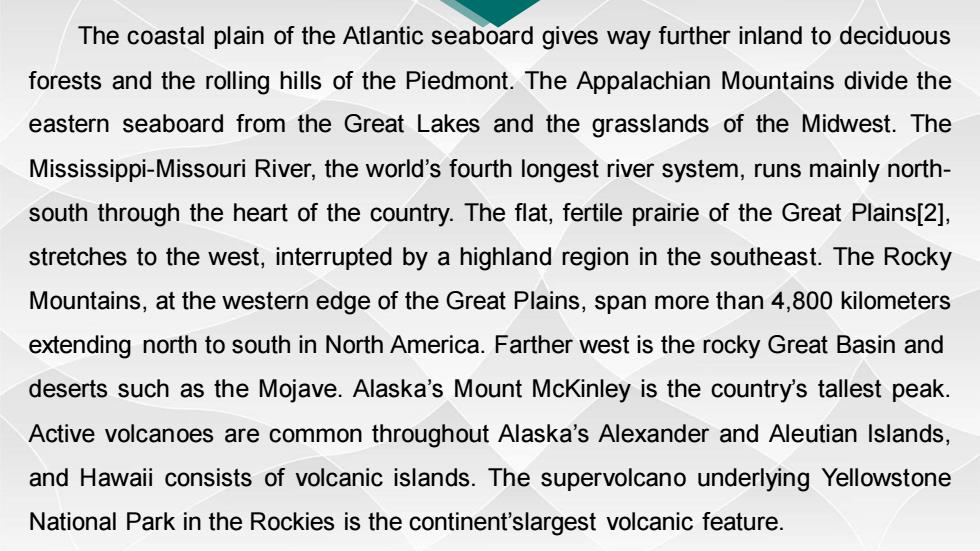正在加载图片...

The coastal plain of the Atlantic seaboard gives way further inland to deciduous forests and the rolling hills of the Piedmont.The Appalachian Mountains divide the eastern seaboard from the Great Lakes and the grasslands of the Midwest.The Mississippi-Missouri River,the world's fourth longest river system,runs mainly north- south through the heart of the country.The flat,fertile prairie of the Great Plains[2], stretches to the west,interrupted by a highland region in the southeast.The Rocky Mountains,at the western edge of the Great Plains,span more than 4,800 kilometers extending north to south in North America.Farther west is the rocky Great Basin and deserts such as the Mojave.Alaska's Mount McKinley is the country's tallest peak. Active volcanoes are common throughout Alaska's Alexander and Aleutian Islands, and Hawaii consists of volcanic islands.The supervolcano underlying Yellowstone National Park in the Rockies is the continent'slargest volcanic feature.The coastal plain of the Atlantic seaboard gives way further inland to deciduous forests and the rolling hills of the Piedmont. The Appalachian Mountains divide the eastern seaboard from the Great Lakes and the grasslands of the Midwest. The Mississippi-Missouri River, the world’s fourth longest river system, runs mainly northsouth through the heart of the country. The flat, fertile prairie of the Great Plains[2], stretches to the west, interrupted by a highland region in the southeast. The Rocky Mountains, at the western edge of the Great Plains, span more than 4,800 kilometers extending north to south in North America. Farther west is the rocky Great Basin and deserts such as the Mojave. Alaska’s Mount McKinley is the country’s tallest peak. Active volcanoes are common throughout Alaska’s Alexander and Aleutian Islands, and Hawaii consists of volcanic islands. The supervolcano underlying Yellowstone National Park in the Rockies is the continent’slargest volcanic feature